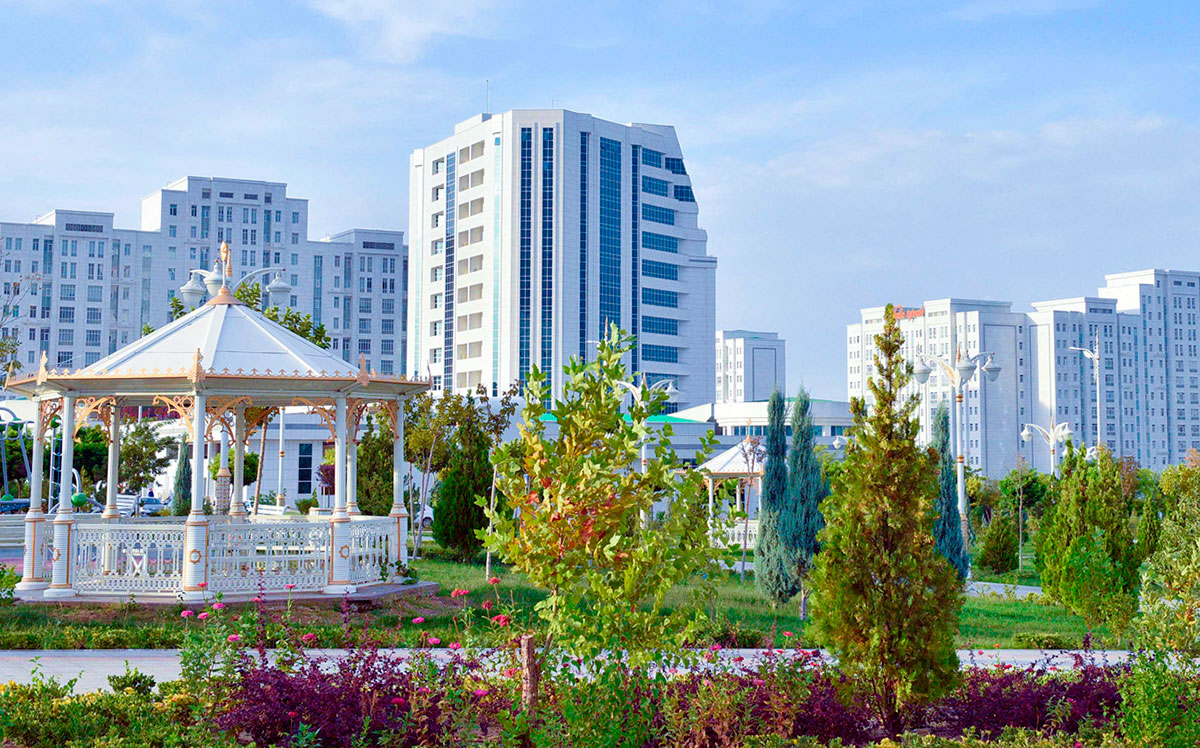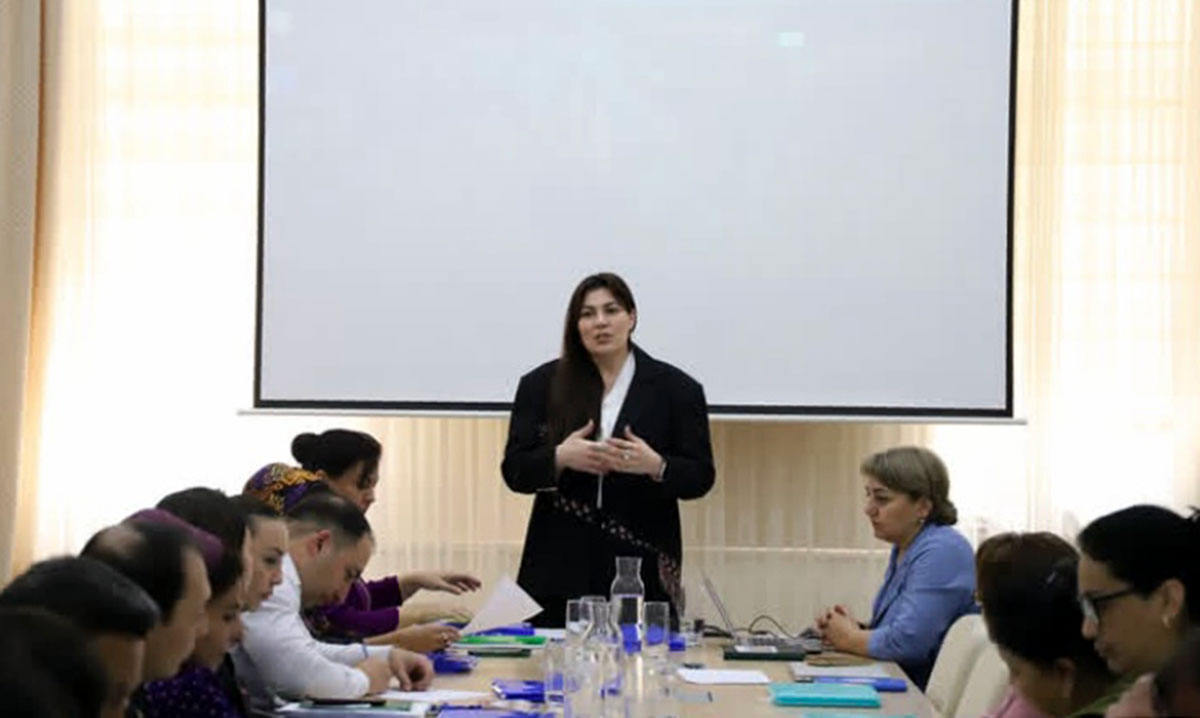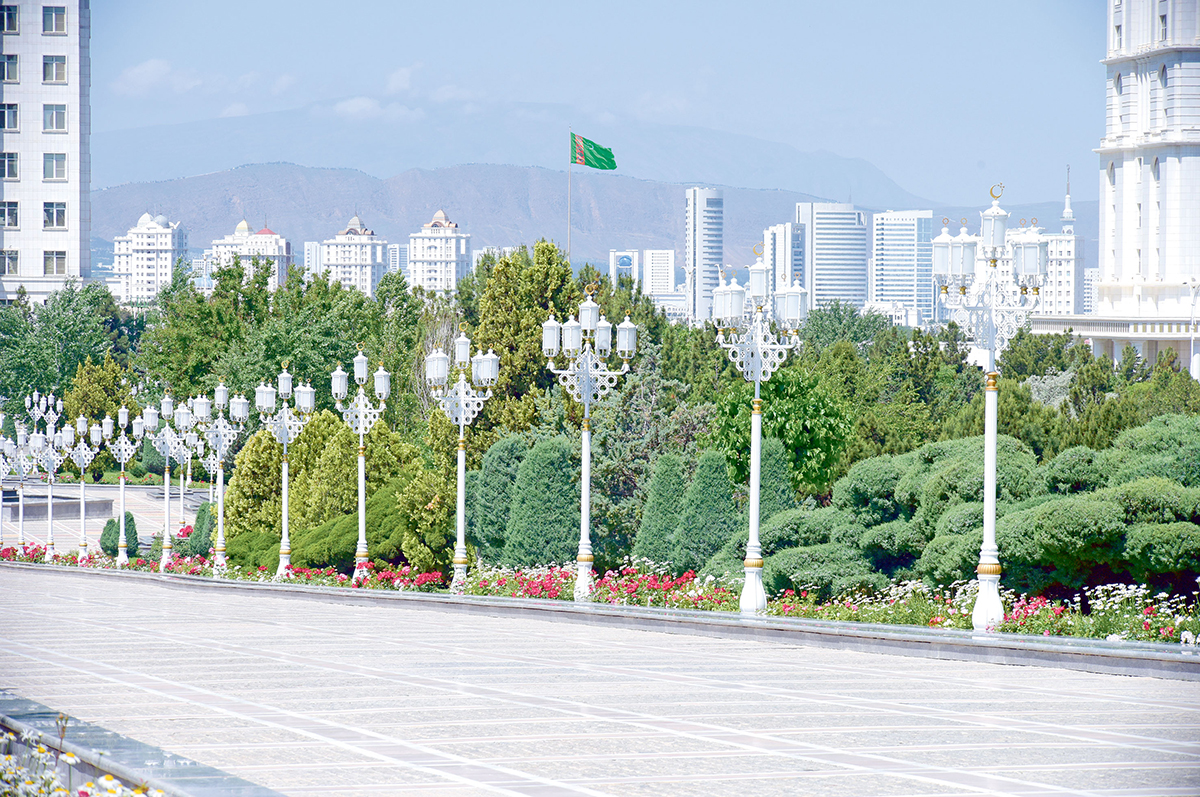Habitually opening the water tap at home, receiving this needed resource for everyday life, few people think about how much human labor, the work of complex multi-stage mechanisms, engineering and technical devices, energy resources are necessary for the operation of technological equipment and processes to ensure clean and safe drinking water in our homes. One can get an idea of this at the largest plant of the country for the production of high-quality fresh water, located in the Ak Bugday etrap of Ahal velayat. The tour was conducted by Serdar Gurbanov, representative of the "Aşgabatagyzsuw" Production Association of the Ashgabat city Khakimlik.
He informed that the plant was built in 2010 by the Turkish company "Polimex" and has a capacity to produce 250,000 cubic meters of drinking water per day. There are two other water plants nearby, including the very first facility with a capacity of 100,000 cubic meters per day, which was built in 1969 and is still operational. The significant growth of production capacities and administrative boundaries of the capital during the period of independence necessitated the construction of additional similar facilities and the establishment of an organization to manage them - the "Ashgdbatvodokanal" Trust in 1995, renamed in 1998 to the PA "Aşgabatagyzsuw". In 1997-98, the second plant, "Gundogar," with a projected potential of 150,000 cubic meters of water production per day, started operating next to the first one and is currently undergoing reconstruction. These three mentioned plants are located in close proximity to each other.
The water intake for supplying the cities of the country is carried out from the Karakum River, and the location of the new plant and the two previous ones is convenient for water collection and processing. The water is initially settled in an open reservoir, where it passes through a dense layer of reeds, which is known to be an excellent biofilter for purifying water from organic and other impurities. Nearby, there is a powerful pumping station from where the water is continuously supplied to the plant's workshops.
At the plant, the "raw material" passes through two settling tanks and then enters an aerator, which is a cascading multi-stage "fountain" that enriches the water with oxygen and eliminates the specific odor. The water is then processed through a complex system of interconnected deep settling tanks. First, a coagulant is added, which attracts and settles suspended particles, followed by the addition of a flocculant suspension, which is used for treating industrial and wastewater. After chlorination, the water is conveyed to the workshop, where the chemicals are removed using a dissolved salt coagulant and lime treatment, which helps to precipitate certain particles. This process removes carbon dioxide from the water, reduces alkalinity and temporary hardness. Overall, the water is purified multiple times, with the final purification taking place in twelve large basins, where there is a gravity flow. After this, a fast flow of crystal clear water can be observed. However, this water cannot be consumed yet, as it needs to undergo a procedure to eliminate pathogenic microflora, which is disinfection. The plant has a laboratory where samples from all stages and the final product are tested hourly to determine the quality and chemical composition of the water. The plant operates in a round-the-clock mode and has 180 specialists, with 30 percent of them being women. The working hours are divided into three to four shifts to ensure continuous attention to indicators of devices, meter data and uninterrupted maintenance of settling systems. There is no time for rest, distraction or absence.
The water usage in the capital is supplemented by a modern complex of underground canals and collectors for diverting drainage, storm water and sewage outside the city, which is an important step for the development of urban infrastructure and environmental protection. These waters flow into underground tunnels and are transported to Waste Water Treatment Plants (WWTP-300) by gravity.
The condition of the ponds and the chemical composition of water contained in them are periodically checked on-site during the preparation process for reuse. An analysis of the quality of incoming polluted wastewater and the level of its treatment is conducted, comparing the results with the permissible parameters of physical and chemical indicators according to the sanitary norms of Turkmenistan. The sections operate automatically under the control of industrial controllers from global manufacturers of equipment and software for industrial automation systems. All processes at the WWTP-300 are managed from the control room in the service building. Disinfection of the treated water is carried out according to a well-established scheme.
It should be emphasized that after being tested by the sanitary and epidemiological service, this water becomes suitable for irrigation purposes only, specifically for forestry, animal feed or technical crops. Its use is limited to these purposes.








